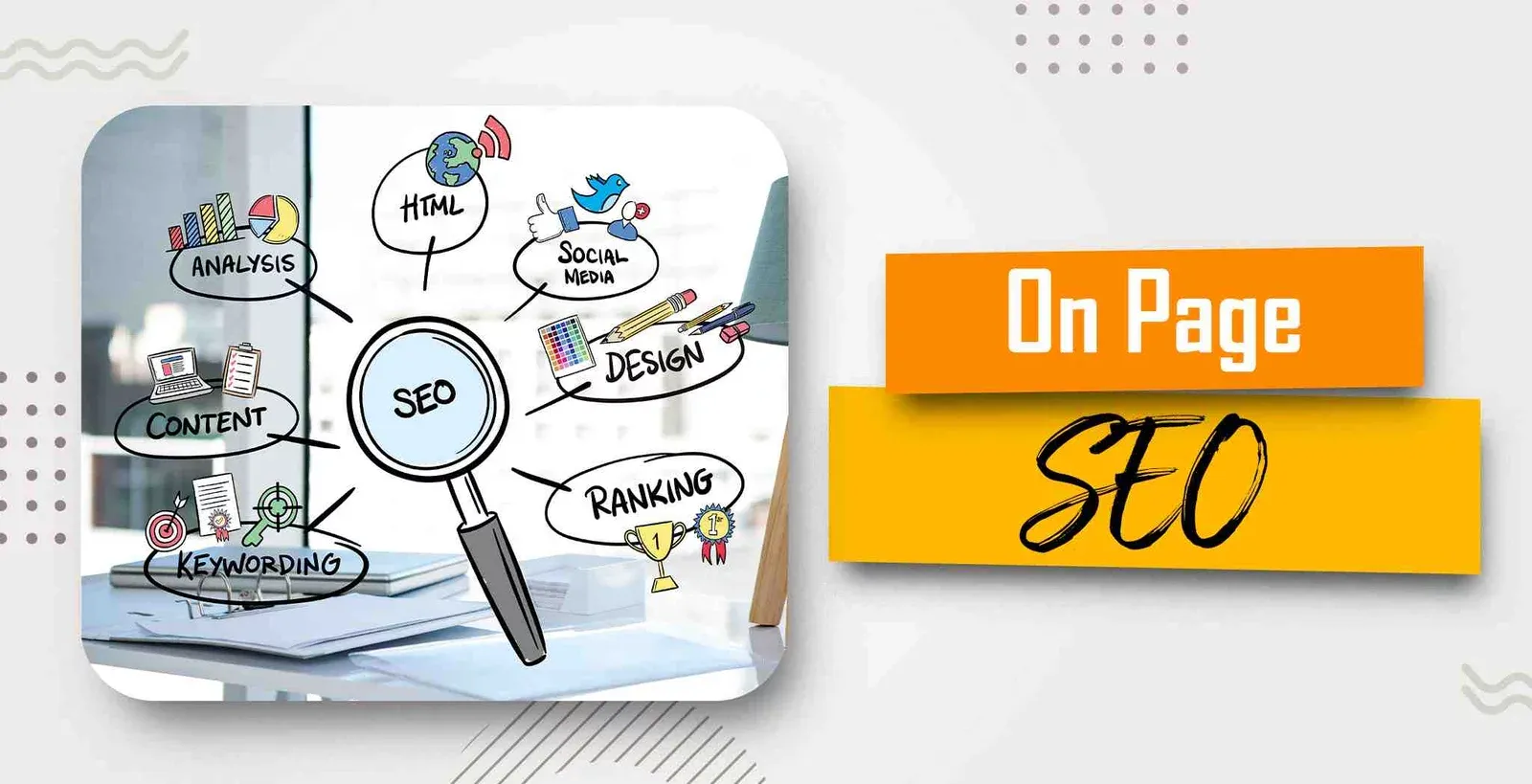In the digital landscape, Search Engine Optimization (SEO) is important for getting many people to visit websites without needing to pay for ads. And within the SEO realm, on-page optimization is a crucial pillar. In this blog, we will explain how to optimize your web pages and rank higher on search engines. Following these tips and techniques can make the most of SEO and boost your online presence. Get ready to learn the secrets of on-page optimization and take your website to new heights. The Importance of On-Page Optimization in SEO (Search Engine Optimization) Is Significant for Several Reasons 1. Improved Search Engine Rankings By optimizing on-page elements such as meta tags, headings, keyword usage, and content quality, search engines can better understand and index your web page. This can help more people find your website when they search, bringing more visitors without paying for ads. 2. Enhanced User Experience On-page optimization focuses on improving the overall user experience by optimizing page load speed, mobile responsiveness, and navigation structure. When users have a positive experience on your website, they are likelier to stay longer, engage with your content, and convert into customers or subscribers. 3. Targeted Keyword Optimization On-page optimization lets you strategically incorporate relevant keywords into your content, headings, and meta tags. By aligning your page content with targeted keywords, you increase the chances of ranking higher for those keywords in search engine results. 4. Increased Click-Through Rates (CTR) Effective on-page optimization techniques such as compelling meta titles and descriptions can entice users to click on your search listings. A higher CTR indicates to search engines that your webpage is relevant and valuable, which can lead to improved rankings over time. 5. Better Content Visibility and Organization On-page optimization involves structuring your content logically and organizationally. This helps search engines better understand and organize your content, making it more likely to be seen as a highlighted answer or a special result. On-Page Optimization On-page optimization means changing individual web pages to make them appear more in search engine results and attract more visitors naturally. This involves improving the pages themselves and their underlying code to make them more relevant, user-friendly, and easily understandable by search engines. Here Are Some Key Components of On-Page Optimization: 1. Keyword Research Find the right words and phrases that people will likely use when searching for information about your website or business. 2. Title Tags Creating unique and descriptive title tags for each web page that accurately reflect its content and include targeted keywords. Title tags are displayed as clickable headlines in search engine results. 3. Meta Descriptions Write concise and compelling meta descriptions that summarise the page’s content and entice users to click through to your website. While meta descriptions don’t directly affect rankings, they can influence click-through rates. 4. URL Structure Ensuring URLs are clean, concise, and contain relevant keywords. A well-structured URL gives search engines and users an idea of what the page is about. 5. Heading Tags Use heading tags (H1, H2, H3, etc.) to structure your content and highlight important sections. Search engines use heading tags to understand the hierarchy and organization of your content. 6. Keyword Placement Strategically place keywords throughout your content, including in headings, subheadings, and body text. However, it’s essential to maintain a natural and user-friendly flow while avoiding keyword stuffing. 7. Content Optimization Creating high-quality, informative, and engaging content that satisfies user intent. This involves addressing relevant topics, providing valuable information, and incorporating multimedia elements such as images, videos, and infographics. 8. Internal Linking Linking to other relevant pages within your website using descriptive anchor text. Internal links help search engines discover and navigate your website and enhance user experience by providing additional information. 9. Image Optimization Optimizing images by reducing file sizes, using descriptive filenames, and adding alt tags. Making your images better helps your website run faster and makes it easier for search engines to understand what your images are about and why they’re important. 10. Mobile Responsiveness Ensuring your website is mobile-friendly and displays properly on different devices and screen sizes. Mobile responsiveness is crucial for user experience and search engine rankings as mobile usage continues to rise. Analysis and Monitoring as Prerequisites for Onpage Optimization Analysis and monitoring are essential prerequisites for effective on-page optimization. They provide valuable insights and data that inform the optimization process, enabling website owners and marketers to make informed decisions. Here’s a crisp and creative explanation: “Imagine your website is a high-performance race car; on-page optimization is the key to unlocking its full potential. But before you hit the gas pedal, you must analyze and monitor every aspect of your car’s performance to ensure a smooth and successful ride. An analysis is like taking your race car to the garage for a thorough inspection. You examine its engine, tires, aerodynamics, and every detail affecting its performance. Similarly, with on-page optimization, you analyze your website’s structure, content, keywords, and user experience. By examining what your website does well and where it needs improvement, you can find new opportunities and learn how search engines see your site. Monitoring is like having a skilled pit crew constantly monitoring your race car’s performance during the race. They track its speed, fuel consumption, tire wear, and any signs of trouble. In the world of on-page optimization, monitoring involves closely monitoring your website’s performance metrics, such as rankings, traffic, bounce rates, and conversions. It helps you spot any issues, track the impact of optimization efforts, and make timely adjustments. By conducting in-depth analysis and diligent monitoring, you equip yourself with the knowledge and insights to fine-tune your on-page optimization strategy. It’s like fine-tuning your race car’s engine, adjusting the suspension, and optimizing the aerodynamics for maximum speed and performance. With analysis and monitoring as your prerequisites, you’re ready to unleash the full potential of your website and leave your competitors in the dust.” Elements of On-page Optimization On-page optimization refers to the various techniques and practices used to optimize individual

